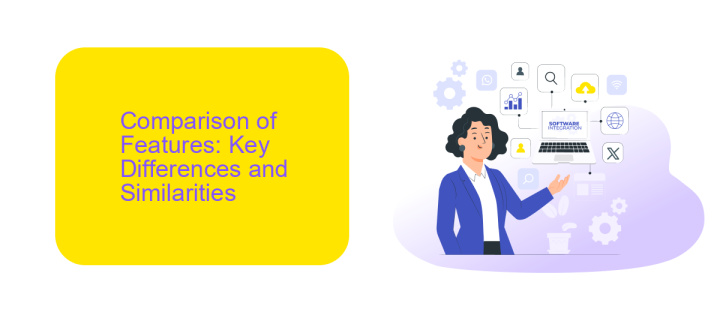Servicenow Integration Hub Vs MuleSoft
In today's fast-paced digital landscape, integrating various software applications seamlessly is crucial for business efficiency. ServiceNow Integration Hub and MuleSoft are two leading platforms that facilitate this process. This article aims to compare these two integration solutions, highlighting their key features, strengths, and use cases to help you determine which one best suits your organizational needs.
Introduction: Overview of Servicenow Integration Hub and MuleSoft
ServiceNow Integration Hub and MuleSoft are two powerful tools designed to streamline and automate business processes through seamless integration. ServiceNow Integration Hub focuses on enabling organizations to connect and automate workflows across various systems, applications, and data sources, providing a unified platform for digital workflows.
- ServiceNow Integration Hub: Facilitates the automation of workflows and integrates with various third-party applications.
- MuleSoft: Provides a comprehensive platform for building application networks, allowing businesses to connect data, applications, and devices.
Both tools offer distinct features and capabilities, making them suitable for different integration needs. While ServiceNow Integration Hub excels in creating automated workflows within the ServiceNow ecosystem, MuleSoft offers extensive connectivity options for a broad range of applications and services. Additionally, tools like ApiX-Drive can further enhance integration capabilities by providing a user-friendly interface for connecting various APIs and automating data flows without the need for extensive coding.
Comparison of Features: Key Differences and Similarities

ServiceNow Integration Hub and MuleSoft are both robust platforms for streamlining integrations, but they cater to different needs. ServiceNow Integration Hub is designed to work seamlessly within the ServiceNow ecosystem, offering pre-built connectors and flow templates that simplify the integration process. It is particularly strong in automating workflows within IT service management, HR, and customer service. On the other hand, MuleSoft is a more versatile integration platform, capable of connecting a wide range of applications, data, and devices. It uses APIs to facilitate integrations and is ideal for complex, enterprise-grade solutions that require high scalability and flexibility.
Both platforms support low-code/no-code environments, making it easier for non-developers to create integrations. However, MuleSoft provides a more extensive set of tools for API management and development, which can be a deciding factor for organizations looking for advanced capabilities. ServiceNow Integration Hub, while more specialized, offers a more user-friendly experience for those already embedded in the ServiceNow ecosystem. Additionally, services like ApiX-Drive can complement both platforms by offering a user-friendly interface to set up integrations without needing extensive technical knowledge.
Integration Capabilities: Building Robust Integrations

Integration capabilities are crucial for businesses aiming to streamline their operations and ensure seamless data flow between various applications. ServiceNow Integration Hub and MuleSoft are two powerful tools that offer robust integration solutions, each with its unique strengths.
- ServiceNow Integration Hub: Known for its ease of use, it allows users to build integrations quickly with a low-code approach. It offers pre-built connectors for popular applications and supports REST and SOAP APIs.
- MuleSoft: Offers a more comprehensive integration platform with advanced features. It supports a wide range of protocols and connectors, making it suitable for complex integration scenarios. MuleSoft also provides robust data transformation and orchestration capabilities.
- ApiX-Drive: An additional tool that can complement both platforms, ApiX-Drive simplifies the integration process by offering a user-friendly interface and pre-configured templates for various applications. It can be a valuable asset for businesses looking to enhance their integration strategies.
Both ServiceNow Integration Hub and MuleSoft provide excellent integration capabilities, but the choice between them depends on the specific needs and complexity of the integration requirements. Tools like ApiX-Drive can further aid in creating efficient and effective integrations, ensuring that businesses can maximize their operational efficiency.
Implementation and Maintenance: Deploying and Managing Integrations

Implementing and maintaining integrations can be a complex task, requiring careful planning and execution. ServiceNow Integration Hub and MuleSoft offer robust solutions for deploying and managing integrations, each with its unique features and capabilities. Understanding the nuances of both platforms is crucial for successful implementation.
ServiceNow Integration Hub simplifies integrations by offering pre-built connectors and a user-friendly interface, making it accessible even for non-developers. MuleSoft, on the other hand, provides a more comprehensive integration platform with advanced features suitable for complex enterprise environments. Both platforms require ongoing maintenance to ensure smooth operation and to address any issues that may arise.
- ServiceNow Integration Hub: Easy-to-use, pre-built connectors, ideal for quick deployments.
- MuleSoft: Advanced features, suitable for complex integrations, requires more technical expertise.
- ApiX-Drive: Facilitates seamless integrations with a wide range of applications, simplifying the process.
Regular monitoring and updates are essential for maintaining integrations. Tools like ApiX-Drive can further streamline the process, offering automated workflows and real-time data synchronization. By leveraging these platforms and tools, organizations can ensure their integrations remain efficient and effective over time.
Conclusion: Selecting the Best Integration Platform for Your Needs
When deciding between ServiceNow Integration Hub and MuleSoft, it is essential to assess your organization's specific needs and goals. ServiceNow Integration Hub is ideal for those already utilizing the ServiceNow platform, offering seamless integration with its suite of tools and a user-friendly interface for automating workflows. On the other hand, MuleSoft provides a more versatile solution with extensive connectivity options and robust API management capabilities, making it suitable for organizations with diverse integration requirements.
Additionally, consider complementary services like ApiX-Drive, which can further streamline the integration process by offering a wide range of pre-configured connectors and easy-to-use tools for automating data flows between various applications. Ultimately, the best integration platform will depend on your existing infrastructure, the complexity of your integration needs, and your long-term strategic goals. By carefully evaluating these factors, you can select a solution that not only meets your current requirements but also supports future growth and scalability.


FAQ
What is ServiceNow Integration Hub?
What is MuleSoft?
How do ServiceNow Integration Hub and MuleSoft differ in their approach to integration?
Can I use both ServiceNow Integration Hub and MuleSoft together?
What are some alternatives for integrating applications and automating workflows?
Apix-Drive is a simple and efficient system connector that will help you automate routine tasks and optimize business processes. You can save time and money, direct these resources to more important purposes. Test ApiX-Drive and make sure that this tool will relieve your employees and after 5 minutes of settings your business will start working faster.

